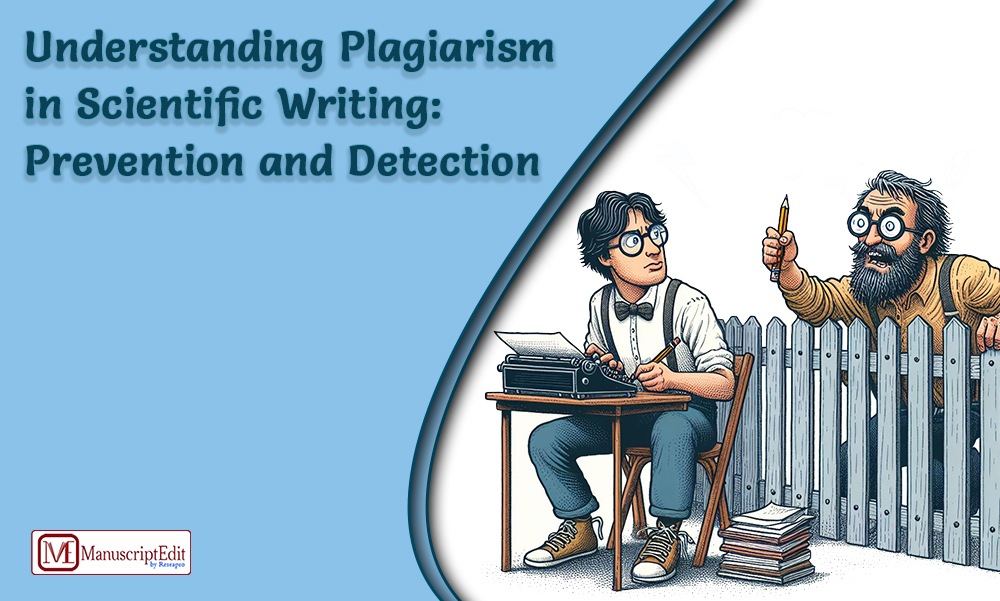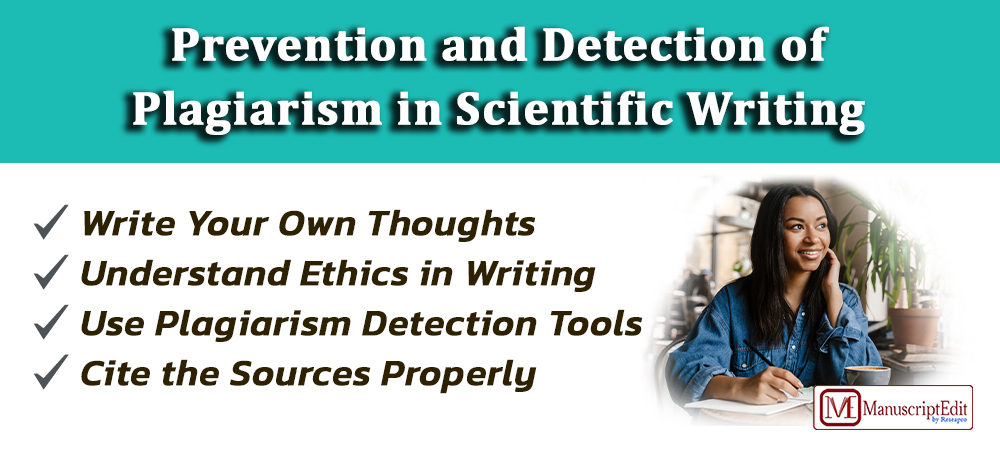 “True ease in writing comes from art, not chance,
“True ease in writing comes from art, not chance,
As those move easiest who have learn’d to dance.”
Alexander Pope
Scientific writing is a skill that requires conscious efforts of the writer to articulate the notion. Unlike creative writing, scientific writing binds the writer to abide by certain rules. As it relies significantly on obtaining theoretical perspectives from existing research, the foremost obligation for a writer here is to give appropriate credit to the original source of data. This is what plagiarism is about.
What is Plagiarism?
Plagiarism, in simple terms, involves duplication of an idea or work without acknowledging the source of such idea or work. It entails copy-pasting the content from a source and presenting it as personal creation. Plagiarism is a serious issue in scientific writing. The term thus denotes an illegal action, whether done intentionally or unintentionally.
Prevention and Detection of Plagiarism in Scientific Writing
Plagiarism can take multiple forms hence it is often a challenge to detect it in scientific writing. When someone copies the content ‘word by word,’ it is the easiest to detect. But in cases where the writer takes partial content from a source or uses synonyms of the original phrases, it can be strenuous to detect plagiarism. The following ways can be of help in this direction:
- Writing your own thoughts:
While it is important to refer to the published content to delve into a subject, it is always better to write your own thoughts on it. This not only minimizes the chances of plagiarism, especially unintentional, but also helps you to present your unique perspective on the subject and earn credit.
- A comprehensive understanding of ethical guidelines:
It is of utmost importance for a writer to comprehensively understand the ethics involved in scientific writing before commencing to write the paper. Many times, plagiarism is committed due to a dearth of knowledge of the ethical considerations in writing. Hence, it is advisable to sit back and study what should and should not be done while writing.
- Using Plagiarism detection software:
It is often impractical and uneconomical to review the content and detect plagiarism manually. To discourage the escalating incidents of plagiarism, institutions are relying heavily on computer platforms designed for detecting plagiarism in a document. These platforms allow comparing the content with previously published content and identify their similarities. A few such tools include Turnitin, Grammarly, and Dupli Checker etc.
- Learn citation rules:
Whenever you need to include any content from a published source, it is mandatory to acknowledge the source and give proper credit. There are a few internationally accepted citation styles like Harvard, APA, and MLA formats which have their own set of rules. Depending upon the content requirements, choose the appropriate one.
Conclusion
Apart from being an unethical act, plagiarism also leads to violation of trust among stakeholders. It is therefore important for a writer to be aware of the plagiarism rules and the ways to avoid it. Providing the original sources of data in recommended formats can resolve the issues and enhance research integrity.




